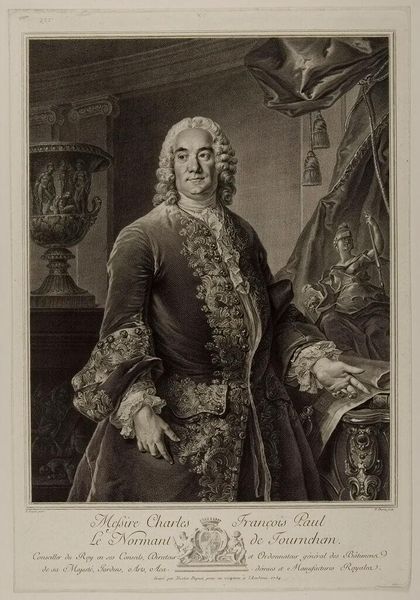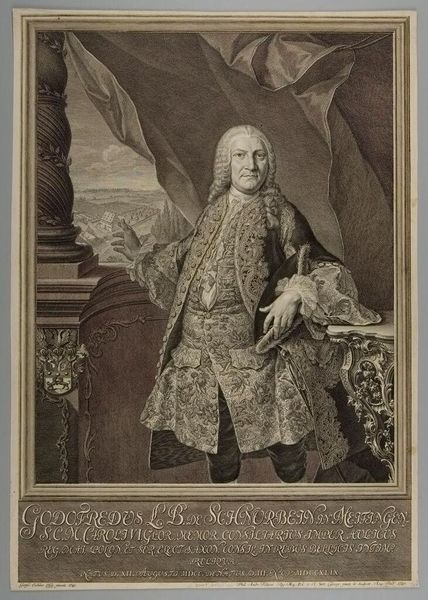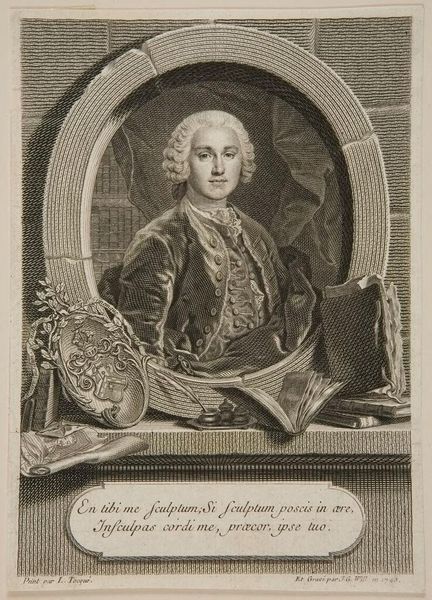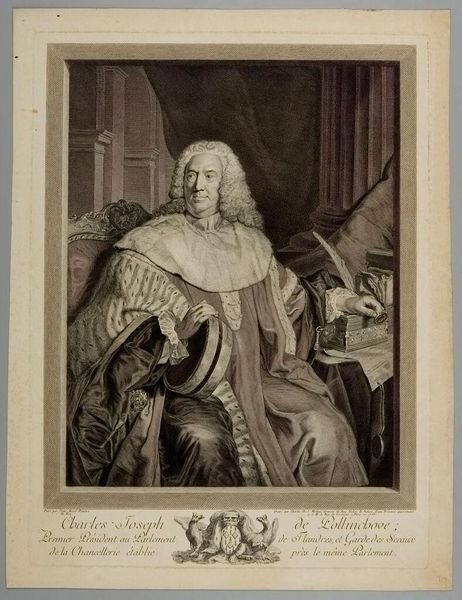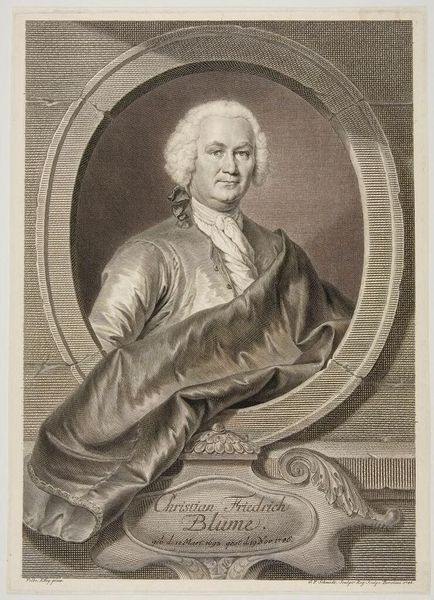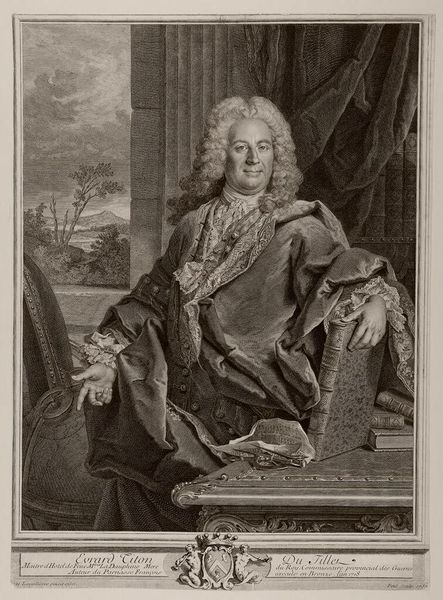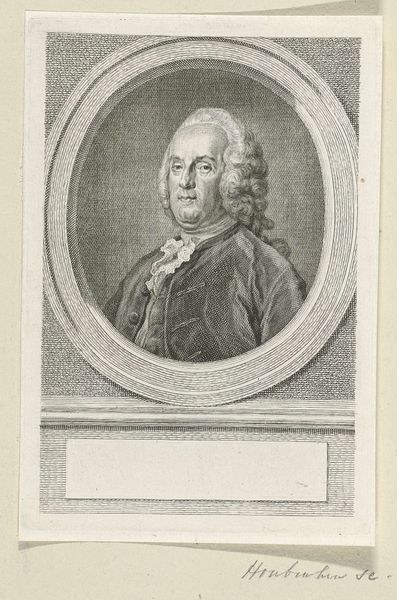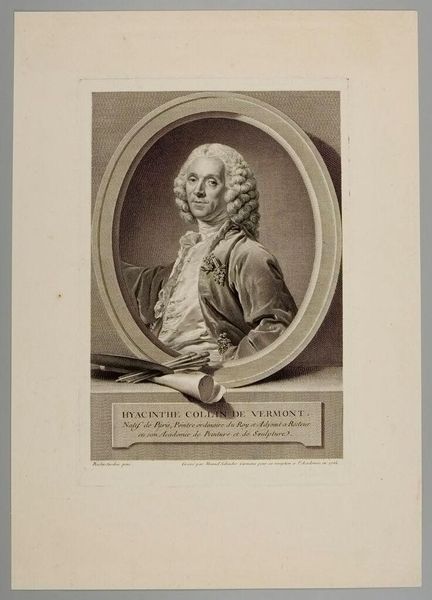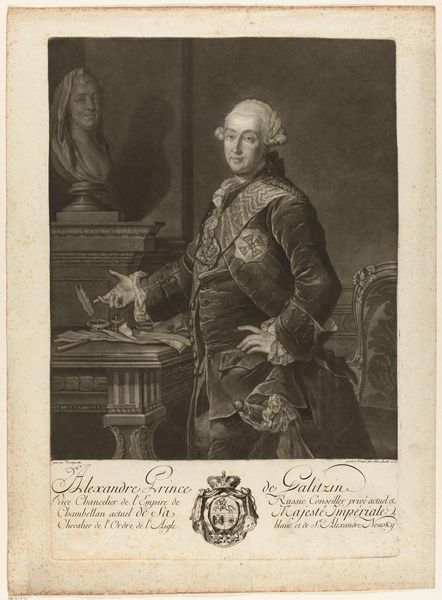
Dimensions: Image: 42.2 Ã 32.4 cm (16 5/8 Ã 12 3/4 in.) Plate: 49 Ã 34.2 cm (19 5/16 Ã 13 7/16 in.) Sheet: 51.5 Ã 36 cm (20 1/4 Ã 14 3/16 in.)
Copyright: CC0 1.0
Curator: The image we're looking at is a portrait of Abel François Poisson, Marquis of Marigny, captured by Johann Georg Wille. It's an engraving, rendered with incredible detail. My initial impression is one of austere elegance. Editor: Austere is a good word. He certainly embodies the patriarchal power structure. The Marquis, brother of Madame de Pompadour, held considerable sway over the arts and royal buildings during the reign of Louis XV. Curator: Indeed. This portrait, made from an engraving, showcases his influence. Wille, the artist, was a prominent engraver, and reproducing portraits like these was crucial for disseminating images of power. Editor: And consider the context. The Rococo era was marked by opulence for the elite and growing inequality for the masses. His fur-lined coat and elaborately decorated vest become potent symbols of privilege. This image reproduces the values of a specific segment of the population. Curator: Precisely. The architecture in the background, the draped fabric – all contribute to the construction of an image of refined authority. It makes me wonder about the individuals not represented in such lavish detail. Editor: A powerful point. The very act of commissioning and circulating such a portrait reinforces existing social hierarchies and artistic conventions. Curator: Looking at it through the lens of accessibility, we can see how this image functioned within the court and how it was made available to the French population. Editor: Exactly, it prompts a deeper understanding of the socio-political dynamics inherent in representing power.
Comments
No comments
Be the first to comment and join the conversation on the ultimate creative platform.

